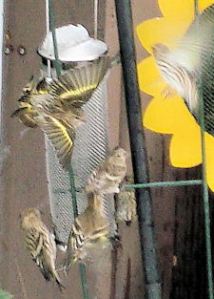If you’re interested in birds in Calgary and the surrounding region, you should know about the Bird Alert phone message.
City of Calgary and Nature Calgary’s Bird Alert Number (403) 221-4519
Compiled twice a week on Mondays and Thursdays, the message gives a rundown of all the unusual bird sightings that have been reported by birders. It lists the bird species and the location where it was seen, so you can take your chance of seeing it as well.
You can listen to the message for bird locations, or if you have a bird to report, you can bypass them, or do so at the end of the recorded message.
A bird that should be reported can be either a rare bird not usually found in the area, or one here in the wrong season. While beginning birders will not know what to report, checking this message on a regular basis will give you a good idea, and help to increase your birding skills.
The report for the first week in November included the following unusual birds in Calgary:
- In Mt. Royal – Mountain Chickadee, Pine Grosbeaks
- In Valley Ridge – Common Redpolls
- On the Elbow River – Wood Duck
- On the Glenmore Reservoir – Common Loon
- In Elliston Park – Pied-billed Grebe
- At Inglewood Bird Sanctuary – Harlequin Ducks
Although it isn’t in Calgary, a birder has reported the first Snowy Owl of the winter season near Irricana. This tundra-breeding species likes open prairie spaces. It will be a challenge to find them in the city during the 2010 competition. If you see one, please let us know!
Pat Bumstead












 The Royal Society for the Protection of Birds (RSPB) in the UK has proclaimed October 24 as Feed The Birds Day. It serves as a reminder of all the things we can do to help the birds through the coming winter.
The Royal Society for the Protection of Birds (RSPB) in the UK has proclaimed October 24 as Feed The Birds Day. It serves as a reminder of all the things we can do to help the birds through the coming winter.










